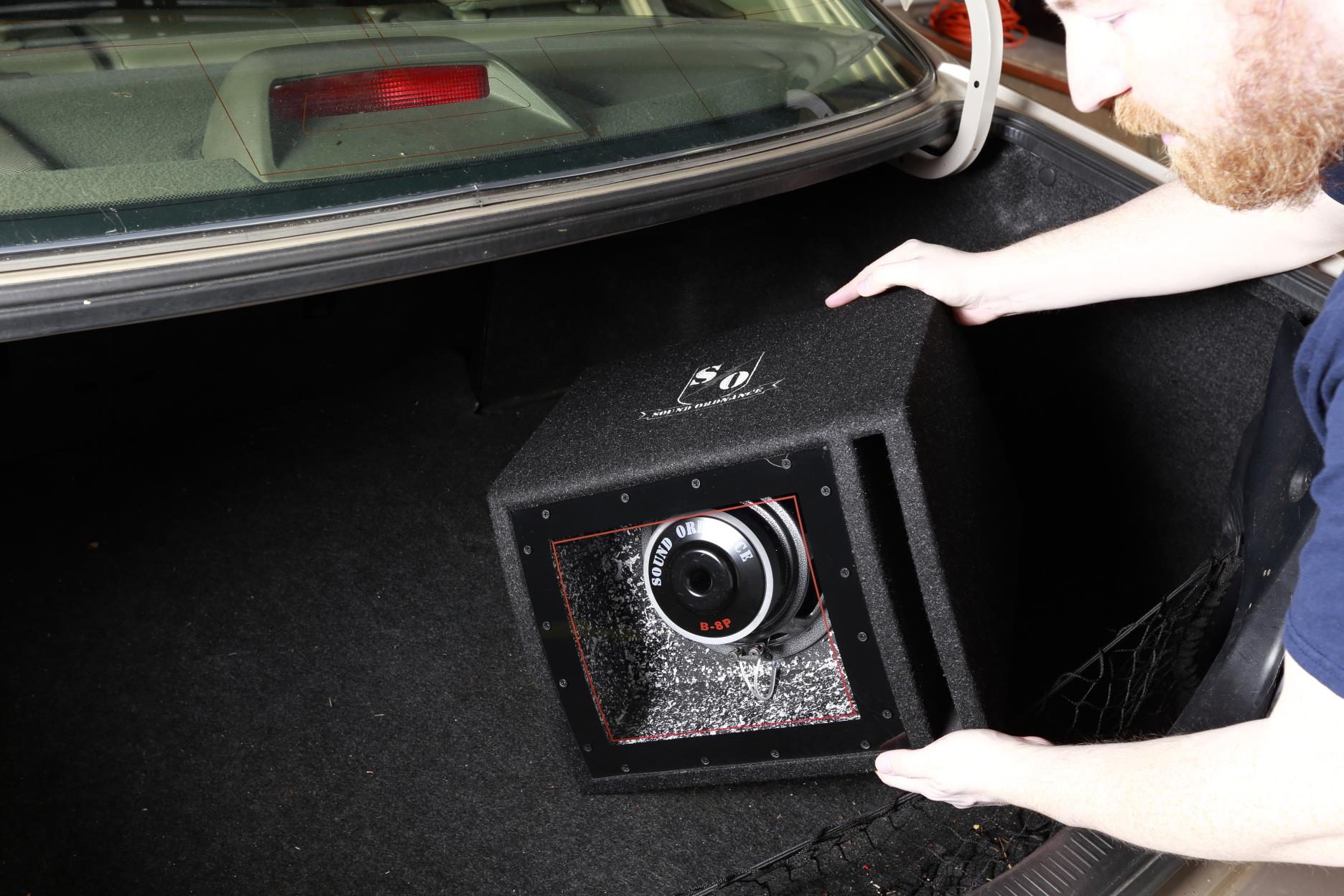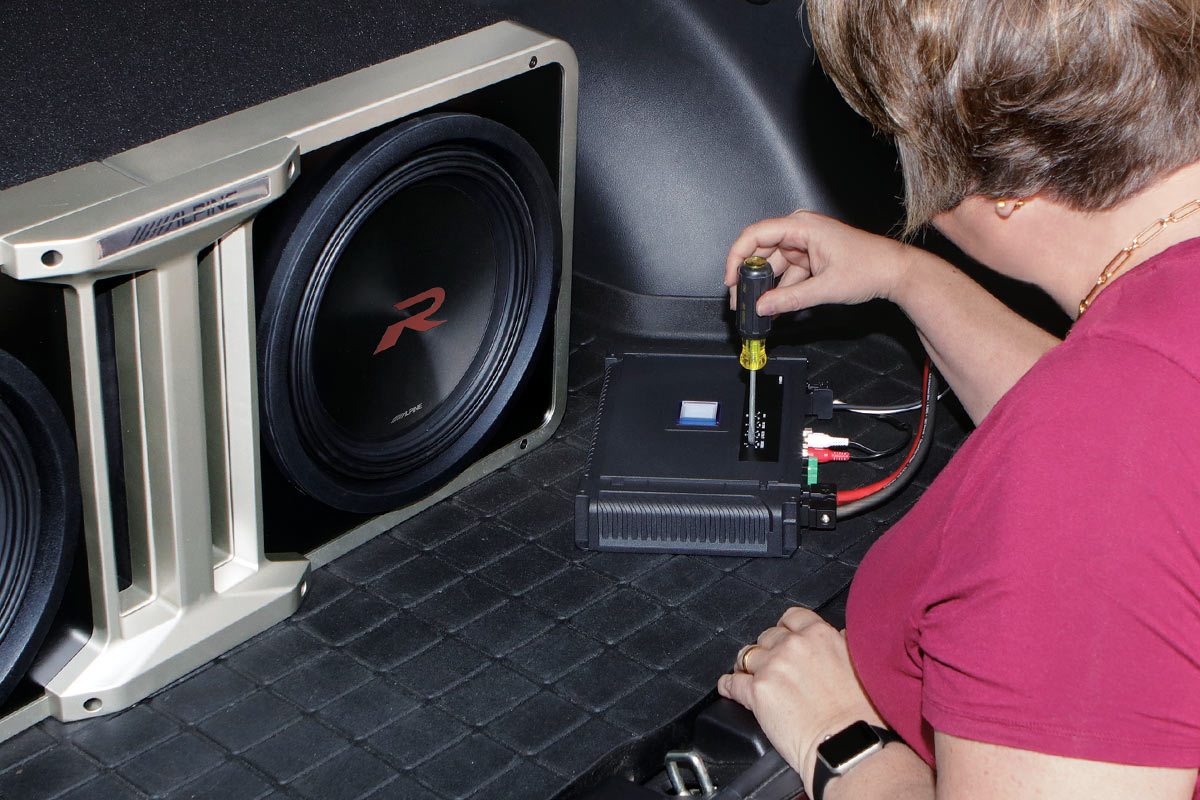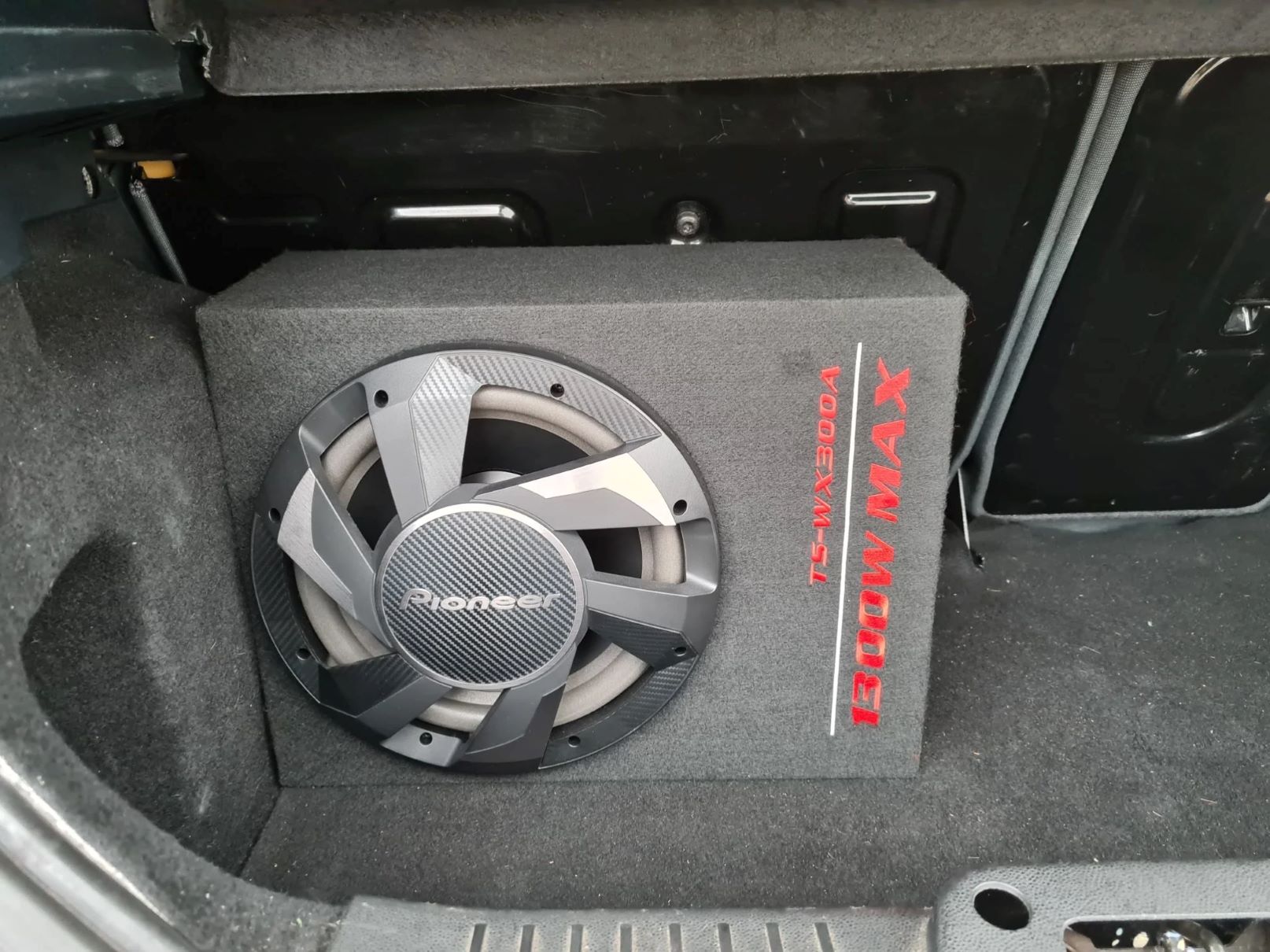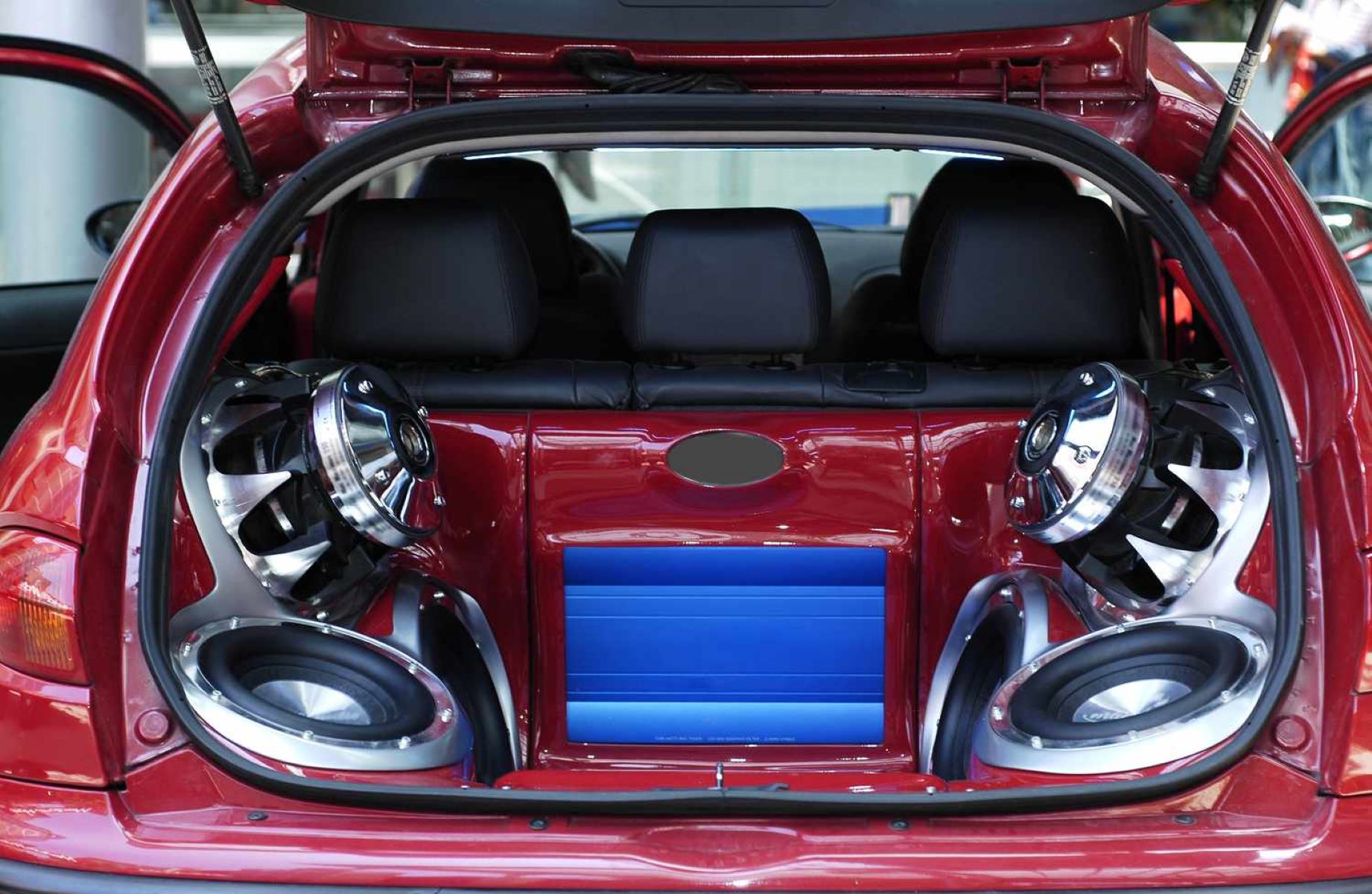Home>Devices & Equipment>Subwoofer>How To Use Car Subwoofer At Home
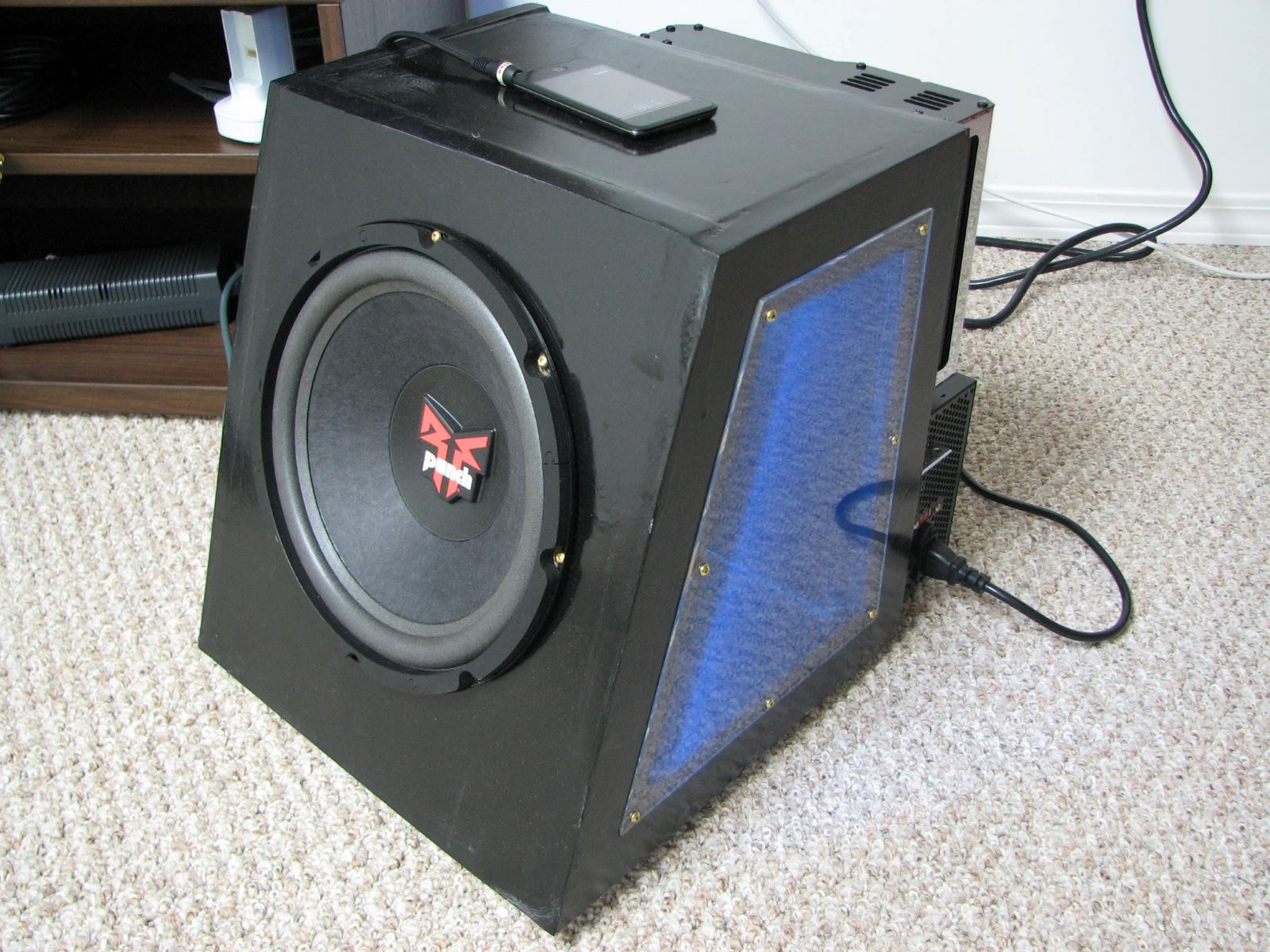

Subwoofer
How To Use Car Subwoofer At Home
Published: January 22, 2024
Discover how to use a car subwoofer for an immersive home audio experience. Enhance your sound system with the power and depth of a subwoofer.
(Many of the links in this article redirect to a specific reviewed product. Your purchase of these products through affiliate links helps to generate commission for AudioLover.com, at no extra cost. Learn more)
Table of Contents
Introduction
Car subwoofers are not limited to car use only. In fact, these powerful audio devices can be a great addition to your home audio system, providing you with a deeper and richer bass experience. Whether you are a music enthusiast, a movie lover, or someone who simply appreciates high-quality audio, incorporating a car subwoofer into your home setup can take your audio experience to a whole new level.
Car subwoofers are specifically designed to reproduce low-frequency sounds, commonly known as bass. These deep tones add depth and realism to music, movies, and other audio content. While home speakers may deliver decent bass, car subwoofers are specially designed to handle the low-frequency range with exceptional clarity and power.
Using a car subwoofer at home allows you to enjoy a more immersive audio experience. Whether you are listening to your favorite music tracks, watching action-packed movies, or playing video games, the powerful bass from a subwoofer can transform the way you perceive sound. You can feel the rumbling bass in your chest, making your audio experience more engaging and lifelike.
Additionally, car subwoofers are built to handle high volumes and heavy bass without distortion. This means you can crank up the volume and enjoy a powerful bass experience without compromising on sound quality. The deep, thumping bass adds a new dimension to your audio, ensuring that every beat and note is felt and heard with utmost clarity.
Another advantage of using a car subwoofer is that it allows you to optimize the audio setup in your home. Many home audio systems lack sufficient bass, especially when it comes to smaller speakers. By incorporating a car subwoofer, you can balance the sound and fill in the low-frequency gap, creating a well-rounded audio experience.
In the following sections, we will explore the different aspects of using a car subwoofer at home, including how to choose the right subwoofer, how to connect it to your home audio system, and how to optimize its settings for optimal performance. We will also discuss common troubleshooting issues and provide tips for proper placement and positioning.
Why Use Car Subwoofers at Home?
There are several reasons why using car subwoofers at home is beneficial. Let’s take a look at some of the key advantages:
- Enhanced Bass Performance: Car subwoofers are specifically designed to handle low-frequency sound reproduction, resulting in a more powerful and impactful bass experience. By incorporating a car subwoofer into your home audio system, you can elevate the overall audio quality and enjoy a richer and more immersive sound.
- Improved Audio Balance: Most home audio systems, especially smaller speakers, lack the ability to deliver deep bass. This can lead to an unbalanced sound where the mid-range and treble frequencies overpower the low end. By adding a car subwoofer to your setup, you can fill in the missing bass frequencies and achieve a more harmonious and well-rounded audio output.
- Immersive Music Playback: If you are a music enthusiast, you know the importance of a solid bass foundation for your favorite tracks. Whether it’s thumping beats in hip-hop, resonating bass lines in rock, or pulsating electronic music, a car subwoofer can bring out the depth and intricacies of the music, making the listening experience more immersive and enjoyable.
- Cinematic Movie Experience: Watching movies at home can be a thrilling experience, especially when it comes to action-packed films with explosive sound effects. Incorporating a car subwoofer into your home theater setup can recreate the cinematic experience by delivering deep and rumbling bass that adds realism and impact to explosions, car chases, and other intense scenes.
- Gaming Sound Effects: For gamers, having a car subwoofer can greatly enhance the gaming experience. The low-frequency rumble of explosions, the reverberations of a racing engine, or the thundering footsteps of an approaching enemy can be felt and heard with greater intensity, adding a new level of immersion and excitement to your gaming sessions.
Overall, using car subwoofers at home can transform your audio experience, whether you are enjoying music, watching movies, or playing games. The deep, powerful bass adds a new dimension to the sound, making it more realistic and engaging. The next section will guide you through the process of choosing the right car subwoofer for your home setup.
Choosing a Car Subwoofer for Home Use
When it comes to choosing a car subwoofer for home use, there are a few key factors to consider. These factors will ensure that you select a subwoofer that not only meets your audio needs but also integrates seamlessly into your home setup. Let’s explore the important considerations:
- Size and Power: The size and power of the subwoofer play a crucial role in determining its performance. Larger subwoofers generally produce deeper bass and handle higher volumes more effectively. However, they may require more space and may not be suitable for smaller rooms. Consider your room size, listening preferences, and available space when deciding on the size and power of the subwoofer.
- Frequency Response: The frequency response of a subwoofer indicates the range of frequencies it can reproduce. Look for a subwoofer with a low-frequency response that goes as low as possible. This will ensure that you can enjoy deep and impactful bass. A subwoofer with a frequency response of around 20Hz to 200Hz is considered ideal for home use.
- Enclosure Type: Car subwoofers are available in different enclosure types, such as sealed, ported, and bandpass. The enclosure type affects the overall sound quality and output of the subwoofer. Sealed enclosures provide accurate and tight bass, while ported enclosures deliver louder and boomy bass. Bandpass enclosures offer a combination of both. Consider the type of sound you prefer and choose the enclosure type accordingly.
- Budget: Set a budget for your car subwoofer purchase. Subwoofers come in a wide range of prices, and it’s important to find a balance between your budget and the level of performance you desire. Remember that a higher price does not always guarantee better quality, so do your research and read customer reviews to find the best subwoofer within your budget.
- Brand and Reputation: Consider the reputation and reliability of the brand you are purchasing from. Look for reputable brands known for their quality audio products and customer support. This will ensure that you invest in a subwoofer that will stand the test of time and provide you with a satisfying audio experience.
Once you have considered these factors and have a good understanding of your requirements, it’s time to start browsing the options available in the market. Compare specifications, read customer reviews, and seek recommendations from audio enthusiasts to find the car subwoofer that suits your needs and fits seamlessly into your home audio setup.
Connecting the Car Subwoofer to Home Audio System
Connecting a car subwoofer to your home audio system may seem daunting, but with the right steps, it can be a straightforward process. Here’s a guide to help you connect your car subwoofer to your home audio system:
- Check the compatibility: Ensure that your home audio system has the necessary outputs and connections to integrate a car subwoofer. Most subwoofers use RCA or speaker wire connections. If your home audio system has a dedicated subwoofer output, that would be ideal. Otherwise, you can use the speaker level inputs or a line level adapter to connect the subwoofer.
- Locate your subwoofer’s inputs: Identify the input options on your car subwoofer. They may include RCA inputs, speaker wire inputs, or both. If your home audio system has RCA output, you can use an RCA cable to connect the subwoofer to the system. If your home audio system only has speaker wire outputs, you can use the speaker wire inputs on the subwoofer.
- Choose the appropriate cables: Depending on the inputs available on your subwoofer and home audio system, gather the necessary cables. For RCA connections, use an RCA cable with the required length. For speaker wire connections, use speaker wire with the correct gauge and length. Ensure that the cables are of good quality to maintain optimal signal transmission.
- Connect the subwoofer to the audio system: Connect one end of the RCA or speaker wire cables to the corresponding outputs on your home audio system. Then, connect the other end to the inputs on your car subwoofer. Make sure the connections are secure and tight to prevent any loose connections or signal loss.
- Configure the settings: Once the physical connections are made, you may need to adjust the settings on both your home audio system and the car subwoofer. In your home audio system’s settings, enable the subwoofer output or adjust the bass settings to send the low-frequency signals to the subwoofer. On the car subwoofer, set the crossover frequency, phase, and volume levels according to your preferences and room acoustics.
- Test and fine-tune: Play some audio and test the subwoofer’s performance. Pay attention to the bass quality, balance with the other speakers, and any potential distortion. Adjust the settings as needed to achieve the desired sound output. Fine-tuning the crossover frequency, phase, and volume levels can help optimize the performance of the car subwoofer in your specific room environment.
By following these steps, you can successfully connect your car subwoofer to your home audio system. Remember to refer to the user manuals for your specific subwoofer and home audio system for any additional setup instructions or troubleshooting tips. Once everything is properly connected and configured, sit back, relax, and enjoy the enhanced bass experience that your car subwoofer brings to your home audio setup.
Adjusting the Settings for Optimal Performance
After connecting your car subwoofer to your home audio system, it’s important to fine-tune the settings to achieve optimal performance. Making the right adjustments will ensure that you experience the best possible bass quality and integration with your existing audio setup. Here are some tips for adjusting the settings:
- Crossover Frequency: The crossover frequency determines the point at which the subwoofer takes over the bass frequencies from the main speakers. Adjusting the crossover frequency ensures a seamless transition between the subwoofer and the other speakers, preventing any gaps or overlaps in audio. Set the crossover frequency to match the capabilities of your main speakers and the natural roll-off of the subwoofer.
- Phase Alignment: Phase alignment refers to synchronizing the subwoofer’s output with the main speakers to achieve proper timing and coherence. Experiment with different phase settings (typically 0 or 180 degrees) to find the position that provides the best integration between the subwoofer and the other speakers. This adjustment is crucial for achieving accurate and impactful bass reproduction.
- Volume Level: Adjust the volume level of the subwoofer to achieve a balanced sound. The subwoofer should not overpower the main speakers or be too weak in comparison. Start by setting the subwoofer volume to around 50% and gradually increase or decrease as needed. Use your ears as a guide and make adjustments until you achieve a pleasing balance between the subwoofer and the other speakers.
- Room Acoustics: Room acoustics play a significant role in the performance of your subwoofer. The placement of furniture, walls, and other objects can affect the bass response. Experiment with different subwoofer positions within the room to find the spot that delivers the best bass performance. Using bass traps or acoustic panels can also help improve the overall sound quality by reducing unwanted reflections and vibrations.
- Listening Preferences: Every individual has different preferences when it comes to bass. Some prefer a tight and controlled bass, while others enjoy a more boomy and resonant sound. Adjust the settings of your subwoofer to match your personal listening preferences. Follow your instincts and make subtle changes to the crossover frequency, phase, and volume until you find the sweet spot that satisfies your ears.
Remember, the adjustments may vary based on the specific characteristics of your subwoofer, room, and audio system. Take your time to experiment and fine-tune the settings until you achieve the desired bass performance. Trust your ears and make incremental adjustments to find the perfect balance between the subwoofer and the rest of your audio setup. With the right settings in place, you can enjoy an immersive and high-quality audio experience right in the comfort of your own home.
Placement and Positioning of the Car Subwoofer
The placement and positioning of your car subwoofer in your home can significantly impact its performance and the overall audio experience. Here are some important factors to consider when deciding where to place your subwoofer:
- Room Layout: Analyze the layout of your room and identify potential locations for the subwoofer. Keep in mind that the subwoofer requires a dedicated space to avoid interference with other objects or speakers. Look for areas near the front wall or corner of the room, as these positions often provide the best bass response.
- Distance from the Walls: The distance between the subwoofer and the walls can affect its bass performance. Placing the subwoofer too close to a wall can result in excessive bass buildup and boomy sound. On the other hand, positioning it too far away from the walls may result in weak bass. Experiment with different distances and find the optimal balance to achieve a well-rounded bass response.
- Subwoofer Orientation: The orientation of the subwoofer can impact its bass performance. In general, placing the subwoofer on the floor with the woofer facing towards the room provides the best results. However, some subwoofers offer flexibility in orientation, allowing you to experiment with different angles to achieve the desired bass distribution. Always refer to the manufacturer’s recommendations for your specific subwoofer model.
- Room Acoustics: Consider the acoustics of your room when positioning the subwoofer. Large, open spaces may require more strategic placement to control the bass resonance. On the other hand, smaller, enclosed rooms may benefit from placing the subwoofer near room boundaries to enhance bass reinforcement. Experiment with different positions and listen for any changes in the bass response to find the best placement for your specific room.
- Isolation and Decoupling: To prevent unwanted vibrations and resonance, it is recommended to isolate and decouple the subwoofer from the floor or neighboring objects. This can be achieved using isolation pads or specialized subwoofer stands. These accessories help minimize vibrations and ensure that the subwoofer produces clean, accurate bass without interference from external sources.
Remember, every room is unique, and the ideal placement of the subwoofer may vary. Take the time to experiment with different positions and orientations to find the placement that delivers the best bass performance and integration with your home audio system. Trust your ears and make subtle adjustments until you achieve a balanced and immersive audio experience.
Troubleshooting Common Issues with Car Subwoofers at Home
While using car subwoofers at home can greatly enhance your audio experience, there can be some common issues that you may encounter. Here are some troubleshooting tips to help you address these problems:
- No Sound from the Subwoofer: If you are not getting any sound from your car subwoofer, first ensure that it is properly connected to your home audio system. Check the cables and connections to make sure they are secure. Verify that the subwoofer is powered on and the volume level is adjusted correctly. If the issue persists, try connecting the subwoofer to a different audio source to determine whether the problem lies with the subwoofer or the audio system.
- Distorted or Muddy Bass: If you experience distorted or muddy bass, check the crossover frequency settings on your subwoofer and audio system. Adjust the crossover frequency to ensure that it is properly filtering the low-frequency signals. You may also need to adjust the phase and volume levels to achieve a cleaner and more balanced bass response. Additionally, consider the placement and positioning of the subwoofer, making sure it is not too close to walls or obstructions that may cause unwanted resonance.
- Excessive Vibrations or Rattling: Vibrations or rattling noises from the subwoofer can be caused by loose connections, cabinet resonance, or improper placement. Check all the connections to ensure they are secure and tight. If the vibrations are coming from the subwoofer cabinet, try placing isolation pads or using specialized subwoofer stands to minimize resonance and vibrations. Adjusting the subwoofer’s volume and crossover settings can also help prevent excessive vibrations.
- Imbalanced Sound: If the bass sounds overpowering or unbalanced compared to the other speakers, adjust the volume level of the subwoofer. It should complement the main speakers without overpowering them. Fine-tune the crossover frequency to ensure a seamless blend between the subwoofer and the other speakers. Experiment with different phase settings to achieve proper alignment and coherence between the subwoofer and the rest of the audio system.
- Interference or Humming Noise: Interference or humming noise can be caused by various factors, such as ground loop issues or electrical interference. Make sure all connections are secure and properly insulated. Use high-quality cables to minimize interference. Consider using a ground loop isolator or a power conditioner to eliminate any electrical noise. Additionally, try relocating the subwoofer away from other electrical devices or sources of interference.
If you encounter any other issues with your car subwoofer at home, refer to the user manual for troubleshooting guidance specific to your model. You can also reach out to the manufacturer’s customer support for further assistance. With proper troubleshooting and adjustments, you can overcome common issues and enjoy the enhanced audio experience that a car subwoofer brings to your home setup.
Conclusion
Incorporating a car subwoofer into your home audio system can bring your audio experience to a whole new level. Whether you enjoy music, movies, or gaming, a car subwoofer adds depth, impact, and realism to the sound, making it more immersive and enjoyable.
By carefully choosing the right car subwoofer for your home setup, connecting it properly to your audio system, and adjusting the settings for optimal performance, you can achieve a well-balanced and powerful bass experience. Consider factors such as size, power, frequency response, and budget when selecting a subwoofer. Take the time to experiment with placement, positioning, and settings to find the best configuration for your specific room and personal preferences.
Don’t be afraid to troubleshoot common issues that may arise, such as no sound, distorted bass, or imbalanced audio. With patience and attention to detail, these issues can be resolved, ensuring that your car subwoofer performs at its best.
Remember, the goal is to create an immersive audio experience that enhances your enjoyment of music, movies, and games. Take the time to fine-tune your setup and trust your ears to find the optimal balance and integration between the car subwoofer and the rest of your audio system.
So, go ahead and bring the power and impact of a car subwoofer into your home. Experience the deep, rumbling bass that adds excitement and realism to your audio, transforming the way you listen and appreciate sound.



